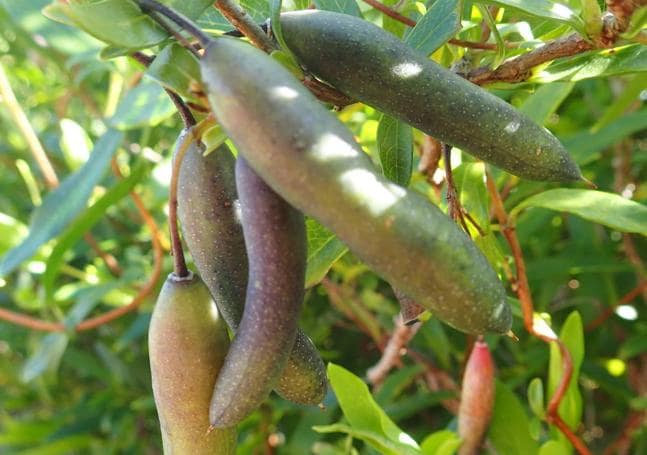Recommended for your garden in the south of Spain: Billardiera fusiformis
The bluebell creeper, as it is also known, is a sturdy twining plant with leathery, narrow, bright-green leaves up to three centimetres long and short stems with nodding blue, white or pink flowers
The bluebell creeper or Billardiera fusiformis, is native to Western Australia. It has naturalised itself in some other temperate regions such as Madeira and California where it was introduced as an ornamental plant in the nineteenth century.
Its close relation, B. heterophylla, is very similar and the two are often confused. It is also known as Sollya heterophylla in some catalogues.
A member of the Pittosporaceae family which includes 200-240 species of trees, shrubs and vines, Billardiera fusiformis is a sturdy twining plant with leathery, narrow, bright-green leaves up to three centimetres long and short stems with nodding blue, white or pink flowers. The pretty blooms attract lots of pollinating insects.
New stems are covered with fine green hairs which turn a reddish brown as it matures.
From early spring until autumn, racemes of up to four nodding bells form.
After the flowers have faded, spindle-shaped pods develop, each one about 3.5cm long containing flattened, brown seeds in the fleshy interior. These pods turn purplish-blue and are considered 'bush tucker' as they are edible and are said to be quite soft and sweet tasting when ripe.

In some parts of Australia, Billardiera has become invasive; the seeds are activated into germination by fire or by soil disturbance.
The bluebell creeper is not drought or frost tolerant. It will grow in partial shade but will need regular watering in the summer (less in the winter) and will need protection against freezing temperatures during the coldest months.
Although a twining vine or climber, it helps to tie stems into a support to encourage it to grow vertically otherwise it will form a sprawling shrub up to two metres high.
Billardiera can be pruned back hard to a strong bud in April or May to promote lots of new branches and prolific flowering.

.jpg)